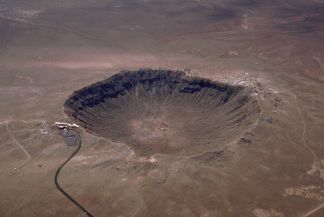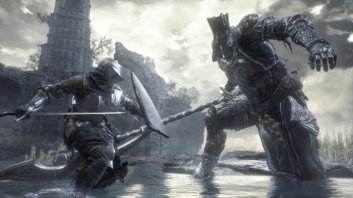Mike Rugnetta of PBS Idea Channel asked in his latest video about Boss Fights what people thought about… well, boss fights. In games, specifically. In reality, he asked two questions:
- What are Boss fights (to you?) and what do they do?
- What about games without Boss Fights? Or adversity at all?
Before I start drunkenly answering these questions, you might want to go check out the video for yourselves. Click the link to watch it, then come back; I promise this post isn’t going anywhere.
Alright, welcome back. Let’s talk bosses! Or at least let me blow smoke up your respective asses about bosses!

He’s listening…
Boss fights are, popularly, a test of the skills you have learned. Traditionally, boss fights are staged, closed off skill checks that require a certain amount of mastery over skills learned over the course of a game. Some games test recently acquired skills; a perfect example of this can be found in the more recent Legend of Zelda games, where the means to defeating a boss is found within the dungeon preceding it.
In these kinds of games, the boss fight is very much a licensing test, where the dungeon is a training course and defeating the boss is proof enough for the developers that a player has mastered the item, and can be counted on to figure out when and how to use it.
In other games (Enter the Gungeon comes to mind, simply because I’ve played/watched it a lot), Bosses are a pure test of in-game skill. The items you’ve acquired and progress you’ve made during a playthrough will make a boss fight easier, no doubt; but if you’re garbage at dodge rolling, you’re still going to hit the ground hard enough to make a 6 foot deep crater.

More or less; depends on how you died.
In these games, the skills required to beat the game are typically given right at the start, and each progressive boss simply ramps up the difficulty, either by increasing the number of threatening situations or limiting the room for errors, which forces a player to hone their skill to the point where the boss can be defeated.
Boss fights aren’t necessarily one singular entity, though; in Devil Daggers, for instance, there is one boss in the game, somewhere so far into a run that under 2% of all players have ever seen it. Every other “boss” moment is either the introduction of new enemy types, which quickly become a regular and terrifyingly numerous occurrence, or a suddenly large wave of enemies to combat all at once. Moments like these are still tests, but without all the drama of a big baddy. The idea is that, once these moments are mastered, future parts of the game can be accessed and played better, leading to further boss moments.
All of this, however, requires “buy in” from the player, and this is where the second question kicks in. Can games without adversity still have boss fights?
My short answer is ‘yes,’ they can, if we look at boss fights from a different point of view.
Broken down to its essentials, a boss fight in most games is a payout for the gradual structured rise in tension brought on from mounting difficulty and more complex game mechanics. The rising difficulty of challenges designed to make players figure out how to use the bow and arrow in Ocarina of Time’s Forest Temple climaxes with the shadow Ganon fight at the very end of the ordeal. This moment only feels like a proper boss fight so long as the player understands that this moment, this fight, is the ultimate skill check before the reward the player knows is coming; they’re accustomed to having their reward at the end, damnit. In addition, the boss fight itself, being a spike in difficulty, earns its “boss” status in part because of the incredible difficulty spike.

Now with 2 times the murder!
In short, change and conflict create the emotional buy-in from the player necessary to give it the oomph required of a boss fight. Good boss fights are tough, but not too tough, and you won’t find them in the middle of a section of gameplay (unless it is a “mini” boss, a fight only significant enough to break up the steady pacing of a dungeon and create a mid-point for the player to reference how far along they’ve come).
In non-adversity games the question becomes “how do you create tension when mechanics and mounting difficulty are non-issues?” Unlike more mechanically focused games, where story telling and narrative can help but are ultimately not necessary for building the tension to create a boss fight moment, narrative games create the tension required of “boss” moments through writing and story.
Journey, for example, creates powerful, beautiful moments where the player is invited to experience the adventures of their pilgrim; sand-surfing, for instance, or the terrifying crossing where you have to avoid the large, mechanical snakes lest they… do something.

Look, don’t ask questions here, I don’t want to know.
Point is, all of these emotions and thoughts the player brings with them start to stack one atop the other in a big, unstable, tension piled mess. When the player reaches the final moments of the pilgrim’s journey, the payoff is palpable; nerves, hope for survival, and the desperate chanting of “come on, you can make it!..” These feelings are practically the same as a boss fight, where instead of the payoff coming from beating a difficult check of abilities learned, payoff comes from narrative resolution from a character overcoming the issues facing them through story and presentation.
At the heart of both of these ideas is one of conflict, and its resolution. Boss fights are just big conflicts; and if there’s one thing that good stories do to the exclusion of all else, it’s conflict and the resolution of them. Instead of boss “fights” you have boss “moments” but in the end, both kinds of games have bosses to cross, moments of gameplay where a player invested in a game will find the same kind of feeling and weight from either one.